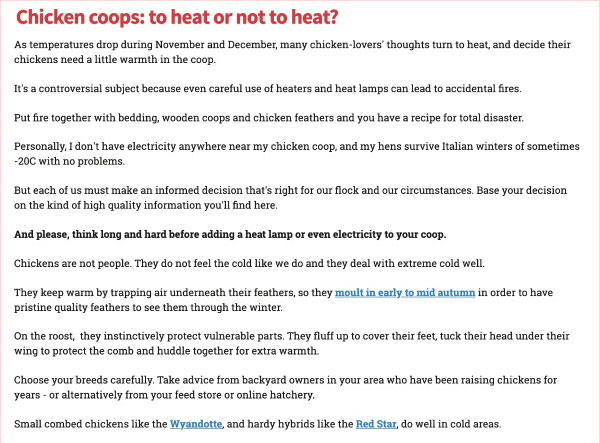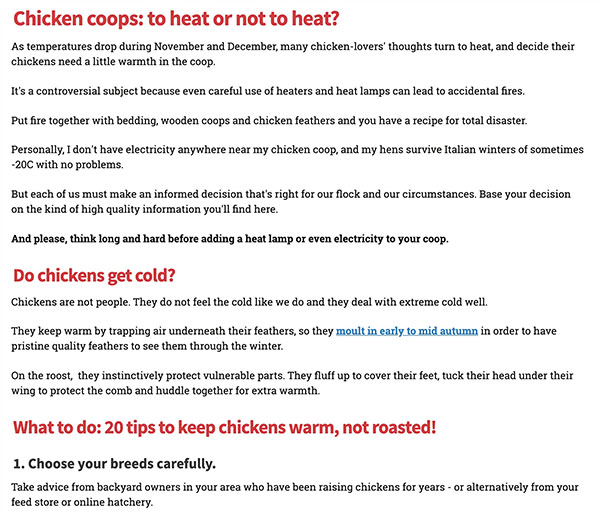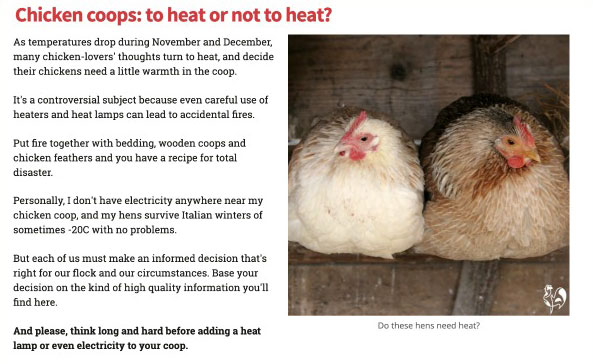
You have one chance to hook the reader, and another to keep her reading. You already know how to write a good headline. But what is a subheading?
On average, 55% of people who reach your blog article will spend 15 seconds or less viewing it. Of those who stay to the end, 43% will only skim it. Just 10% will read your masterpiece from start to finish.
It’s easy to overlook the importance of subheadings. They tend to come as an afterthought, once your blog content is ready and your first paragraph has hooked the reader.
The fact is, subheadings should form an important part of your blogging strategy.
But what exactly is a subheading, and how can you create the perfect string of words?
In this article, you’ll learn what a subheading is and why it’s so important. And you’ll find 20 tips about how to structure, write and place them.
Let’s start at the beginning.
What Does “Subheading” Mean?
“You had me at hello.” – Dorothy Boyd, played by Renée Zellweger, in the film Jerry Maguire
A blog article needs a strong opening heading. Without it, your visitor won’t even read the first sentence.
 Your next task is to keep her reading, which is where subheadings come in. They’re like mini headlines at the start of each section. The headline draws the reader into the article, and subheadings draw her irresistibly down the page like a magnet.
Your next task is to keep her reading, which is where subheadings come in. They’re like mini headlines at the start of each section. The headline draws the reader into the article, and subheadings draw her irresistibly down the page like a magnet.
In “geek speak,” your main article title is known as H1. Subheadings are H2, sub-subheadings H3, and so on.
Suppose your article headline is: “How to Start an Email List.” Your first subheading might be “What Is an Email List?” Your next one, “Why Email Lists Are Important,” and so on.
You’re telling the reader what to expect in that section of text.
Why Are Subheadings Important?
Think of a subheading as the key to a door. Your sections of text are each a door. The subheading is going to unlock the door and lead your reader through.
If your key doesn’t work, the door stays locked and the reader wanders off to find the right key on someone else’s blog. If you’re blogging to make money, you need people to read through to the end and take action.
Consider this excerpt from a long (about 3,000 words) article.
(Please note: I’m from the UK where headings and sub-headings are written with only the first word Capitalized. See Tip #3 below for information about how other countries style.)

- It’s got a catchy H1, complete with keyword, about a subject that is (believe it or not) enthralling to the world of chicken keepers.
- It has short paragraphs, which are easier to read.
- It uses bold to emphasize an important point.
But the reader has no way of knowing what each paragraph is about, or where one sub-topic ends and another begins.
The person scanning this article wouldn’t know whether the content is worth investing her time. She’s likely to click away.
In fact, this is one of my most popular articles both in terms of being found in search results, and readers getting to the end. And that’s important, since my final call to action is a product.
Why does this article work? I “doctored” the excerpt to make a point. Take a look at the (almost) completed article, below.
- H2 subheadings break up the text. They’re smaller than the H1, but still stand out from the paragraphs.
- Each subheading is a straightforward description of what’s coming in the text.
- Each of the numbered “tips” is an H3 subheading, helping the reader know whether that tip is worth reading about.

See how the subheadings both stand out and tell the reader what to expect?
And each section is short. The reader knows what it’s about and knows she does not have to spend too much time reading that section. It’s much more likely to succeed than a solid block of text.
But why did I say “almost” completed? I felt the first section, even though the sentences are short, was a little long and boring. Remember, the attention span of a reader is measured in seconds.
So I added an image of some hens keeping warm — another way to sustain interest and lead the eye down to the next subheading.

The bottom line? Don’t lose your reader by making her work too hard. Spell it out with subheadings!
How to Write Irresistible Subheadings: 20 Tips
Now that you understand why subheadings are so important, you need to know how to use them effectively.
With these tips, you’ll be crafting irresistible subheadings in no time.
1. Make subheadings stand out.
Use a smaller font than your (H1) headline, but larger than the text.
2. Use color.
Consider making all subheadings a different color from your text. Don’t use random colors though! Choose one from your blog palette.
3. Decide on capitalization.
In the US, headings and subheadings generally have each word longer than three characters Capitalized.

However, in Europe that’s not the case: headlines are written in lower case (apart from the first word). If you’re anywhere apart from the US, decide for yourself whether to use US styling or not. I use UK styling because that’s where I’m from, despite the fact that a large proportion of my visitors are from North America.
4. Be concise.
Keep subheadings short, clear and concise. Ensure they’re not so short that they leave the reader unsure about what’s to follow.
5. Be specific.
A subheading such as “Methods” doesn’t describe clearly enough what the section is about. “Methods of feeding pumpkins to chickens” tells the reader exactly what’s coming.
6. How long should subheadings be?
The accepted length is 8 words or shorter. But audiences and subjects differ. Test out different lengths and watch your statistics to see whether length makes a difference.
7. Be consistent.
Don’t make one subheading 8 words and the next, 20. It makes the article look out of balance.
8. How many subheadings is a good number?
This will, of course, depend on the length of your content. As a rule of thumb, if there’s only one or two short paragraphs separating subheadings, you have too many and they will lose their impact.
Incorporate the topic into another section — or ask yourself whether you should remove the information, or move it to a new page or post.
9. Break up subheading sections.
If your subheading section looks too long, use sub-subheadings. These are also known as H3s. If you must, go as far as H4s.
In the example above, “20 Tips” is the H2, and because it would be too long a section to include under the single H2, each tip is a H3.
10. Use other ways of highlighting.
Bolding can emphasize text between subheadings. It’s another tool to make the reader take note of important information. Or use bulleted or numbered lists to pull out important info.

11. Ask a question in your subheading.
It evokes curiosity and makes the reader feel she’ll be missing out if she doesn’t read on.
12. Use action words.
Use verbs in subheadings, particularly in a “how to” article. Verbs sound dynamic and encourage action.
13. Include numbers.
Add a number to one or two subheadings. “20 tips” tells the reader how much she stands to gain.
14. Avoid “cutesy” or cryptic subheadings.
Someone scanning the page won’t take the time to work out what you mean.
15. Focus on benefits.
Focus on the unique benefits for your reader. Readers always come first. Signposting the help you’re going to give in the next section of content gives them a compelling reason to keep reading.
16. Ask yourself why.
Ask these questions of yourself:
- What do I want the reader to take from this paragraph?
- What’s the most important message of this short piece of content?
- Why should anyone read this section?
That will focus your mind on appropriate wording.
17. Create a path.
Remember: you’re leading your reader as far as possible down the page. View every subheading as a stepping stone.
18. Use anchor links.
List subheadings at the top of your article and make them “anchor links.” This enables readers to jump ahead to any section.
This works particularly well for a long piece. Not only do the links take the reader immediately to a section she may be particularly interested in, they show that you’ve covered the information in depth.

19. Be consistent in your subheading structure.
Consistency helps the reader become familiar with the article and encourages her to keep reading.
For example, if you start the first subheading with “how to,” such as “How to Establish an Exercise Routine,” try to use “How to” for the other H2 subheadings, for example: “How to Choose the Best Exercise Gear.”
Then start H3 subheadings differently, perhaps with a verb: “Choose a Time to Exercise;” “Decide on the Type of Exercise” and so on.
20. Use subheadings to avoid writer’s block.

Writing a long article can be daunting, too. So use subheadings to your own advantage. Once you have researched your subject, work out your subheadings in advance. Set yourself the task of writing one section at a time.
If you need to, take a break between sections. But mostly, you’ll find there’s no such thing as writer’s block, and the article is finished in half the time.
And Finally.
There it is. 20 tips to make subheadings turn “bouncers” into scanners, scanners into readers. And readers, hopefully, into customers.
Worried you can’t remember these 20 tips when drafting your next awesome article? Worry not. We’ve prepared a handy checklist to keep you on track!

Cath Andrews
Latest posts by Cath Andrews (see all)
- Start a Passion-Based Business and Live Your Dream - February 1, 2023
- What Do You Say When Their Eyes Glaze Over? - December 20, 2021
- How to Monetize Your Email List in 5 Simple Steps - October 26, 2021

